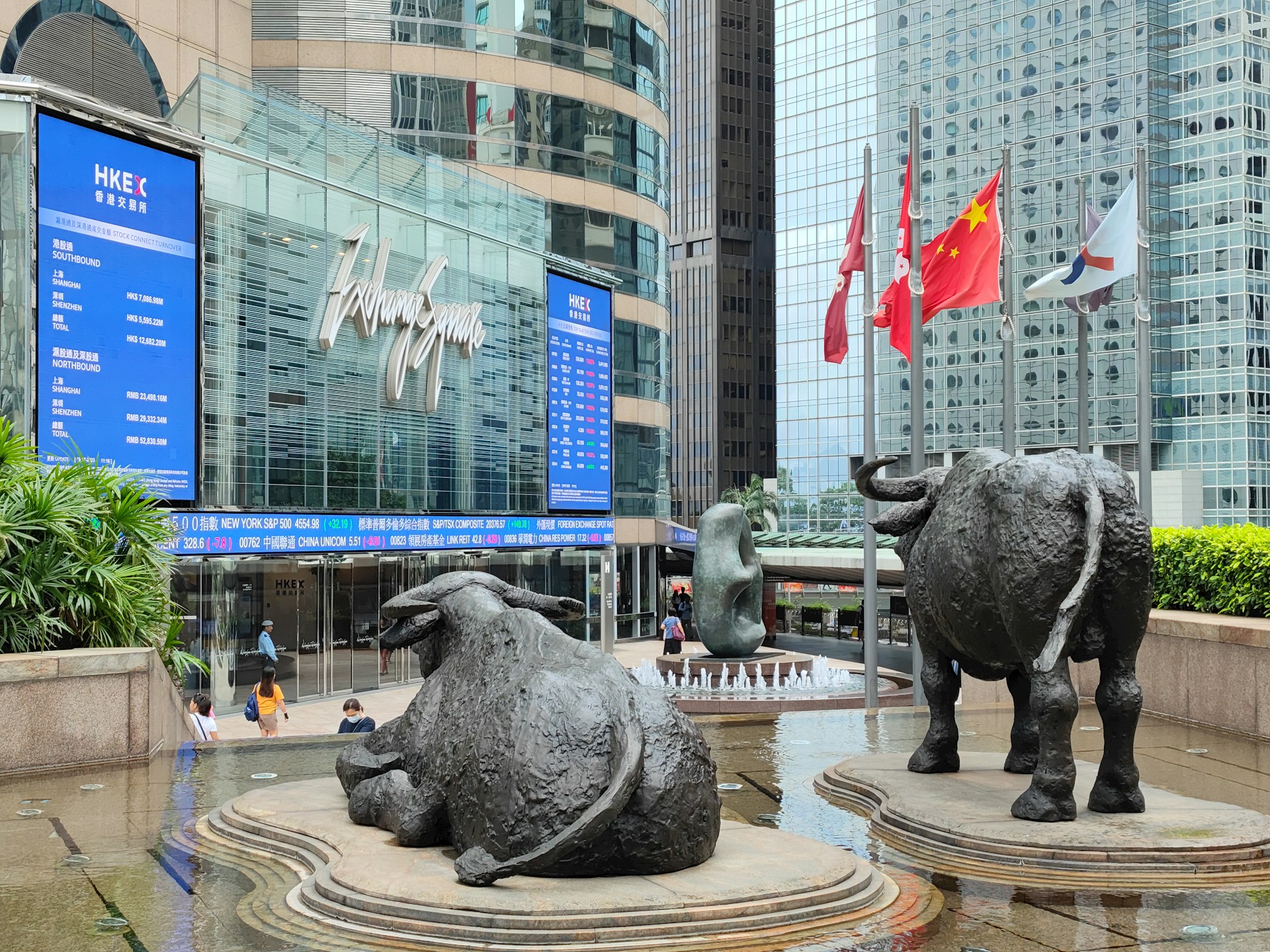While Hong Kong’s Hang Seng Index flirted with its highest level in three and a half years, the real story isn’t about a rally. It’s about relief. The market’s 0.2% lift on Thursday was less a sign of bullish conviction and more a temporary suspension of fear—rooted in the belief that the US and European Union may strike a tariff accord that avoids escalation. But what this market buoyancy masks is a deeper strategic divergence playing out globally: one where policy alignment is episodic, capital mobility is narrowing, and macro uncertainty remains very much intact.
The modest uptick in Hong Kong equities came alongside restrained gains in mainland indices, with the CSI 300 and Shanghai Composite also edging up 0.2%. Among the outperformers were consumer and logistics names like Zhongsheng Group Holdings and ZTO Express, and chipmaker Semiconductor Manufacturing International, joined by financial heavyweight China Life Insurance. Yet even these gains, while headline-friendly, are structurally thin. They’re riding on signals, not substance.
Across Europe and the US, the policy mood remains fractious. Washington's pursuit of parallel tariff structures with both Japan and now the EU reflects less about cooperative trade philosophy and more about replicable leverage. Meanwhile, Brussels’ receptiveness to a 15% tariff alignment isn’t yet policy—it’s intent. And as with all transatlantic trade negotiations, the gap between draft language and enforcement is vast. That hasn’t stopped traders from extrapolating calm from communication. But operators would be wise to decouple signal from strategy.
Hong Kong’s current position is particularly instructive. It remains a market barometer not only of Chinese sentiment but also of Asia’s interpretation of global risk. While Western indices often reflect tech optimism or Fed expectations, Hong Kong offers a clearer read on regional investor sentiment around capital access, geopolitical noise, and trade realignment. That the Hang Seng Index is near 25,600 amid prolonged property drag and capital outflow fears is telling: investors are clinging to tactical positives, not re-rating the long-term thesis.
The optimism around a US-EU tariff deal is rooted in pattern recognition. After Washington’s 15% tariff agreement with Japan, market actors are betting on a similar framework applying to European goods—particularly autos. In theory, this would avert retaliatory escalations and stabilize supply chains already stretched by logistics inflation and sanctions compliance costs. But the assumption that global markets will benefit evenly is misguided. Asian exporters—especially in South Korea and China—may still find themselves outside the scope of detente, or worse, tactically disadvantaged by exclusion from such bilateral accommodations.
That exclusion risk is not just theoretical. Over the past 12 months, the US has deepened industrial policy incentives and selectively penalized non-aligned producers. While this favors some ASEAN and North Asian markets in the short term, it creates long-term fragmentation in trade norms and value chains. For Hong Kong, a jurisdiction caught between mainland integration and global market relevance, this fragmentation poses systemic challenge—not just valuation drag.
The resilience of selected Hong Kong stocks—car dealers, insurers, logistics firms—should not be confused with systemic confidence. These are capital-light plays with relative insulation from regulatory compression. Their gains reflect sectoral rotation, not economic reacceleration. Semiconductor Manufacturing International’s 2% jump is likewise illustrative: driven by sovereign-level support and strategic necessity, not margin optimism.
If anything, the current environment reinforces how limited the transmission is between macro signaling and sustained corporate earnings in Hong Kong. While Chinese policy support has trickled into capital markets in drips—via central bank liquidity and selective bond buying—it has yet to translate into broad private-sector conviction. And without that, index-level strength remains technically fragile.
Meanwhile, institutional investors are already preparing for divergence. Global allocators are shifting from correlation-based portfolio design to a more granular interpretation of regional pricing regimes. The US and EU may align temporarily on tariffs, but their domestic consumption, fiscal posture, and debt servicing burdens are increasingly misaligned. That divergence forces a rethinking of beta exposure, especially for markets like Hong Kong that sit at the nexus of capital flow sensitivity and geopolitical visibility.
China’s own stance complicates the picture. Beijing’s trade priorities are now explicitly bifurcated—balancing domestic reindustrialization with selective global alignment. That leaves little room for blanket optimism around trade normalisation. And for Hong Kong investors, this strategic ambiguity imposes a premium on liquidity, not just valuation.
So where does that leave this week’s rally? In the short term, higher index levels offer breathing room for corporates under pressure and investors seeking exits. But structurally, the capital flow environment remains uneven. Inflows may stabilize, but they are unlikely to accelerate unless there’s credible fiscal re-leveraging or regulatory loosening in the mainland.
This moment is a reprieve—not a regime shift.
Tariff optimism may steady indices, but it does not rewrite strategic positioning. For global operators and regional investors, the real adjustment isn’t about alignment—it’s about managing divergence with sharper pricing, selective hedging, and an unflinching eye on institutional capital posture. This is tactical calm, not strategic consensus.





-3.jpeg&w=3840&q=75)



.jpg&w=3840&q=75)





